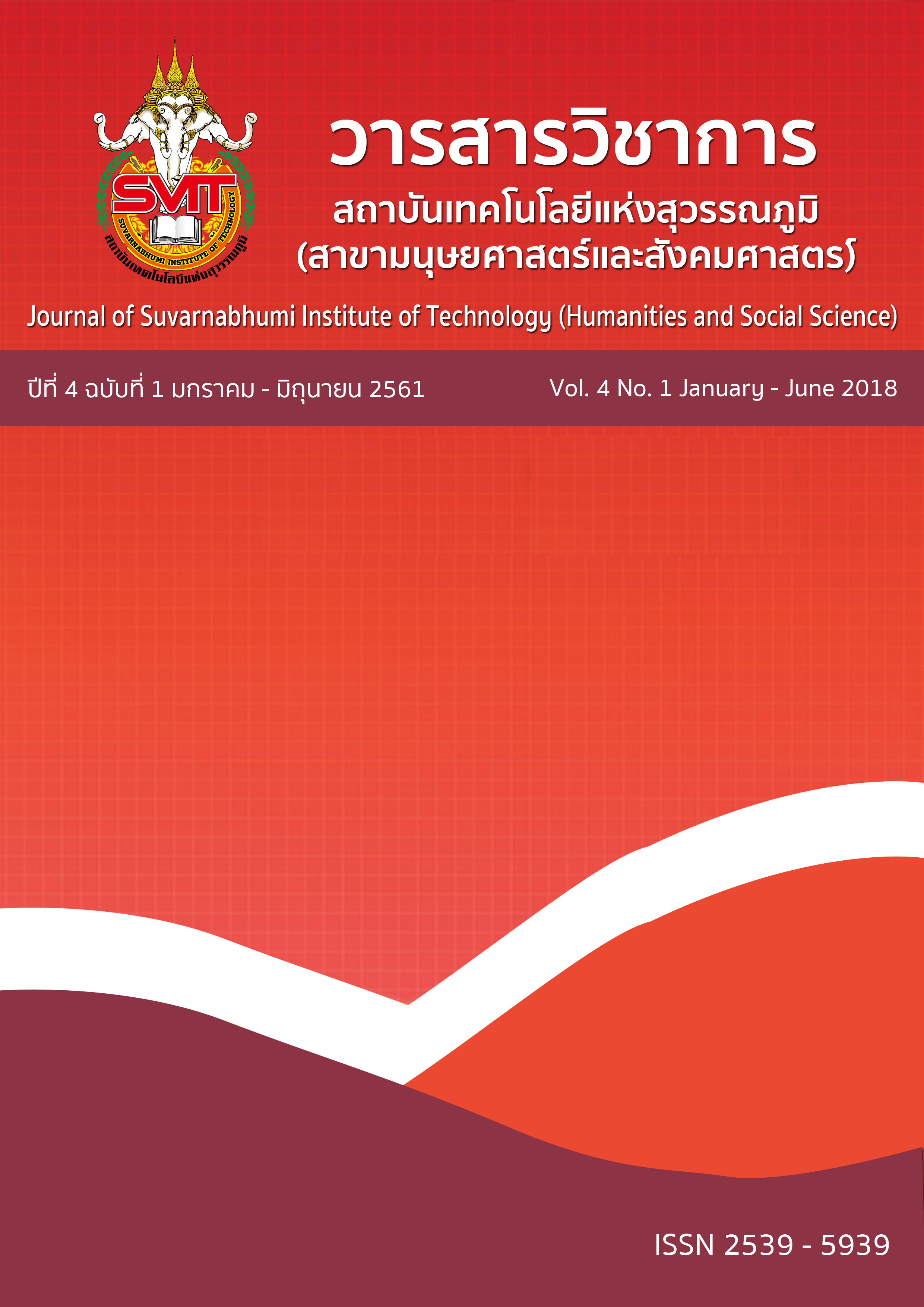LOCAI BUSINESS MANAGEMENT UNDER THAILAND 4.0 ROADMAP A CASE STUDY OF BAHNNALING SEMI-MILLED RICE FARMERS GROUP AT KUANSO, KUANNIENG DISTRICT, SONGKHLA PROVINCE
Keywords:
Local Business management under Thailand 4.0 roadmapAbstract
This research studied how a group of Bahnnaling semi-milled rice farmers conducted their local business managementunderThailand4.0 roadmap. Therefore, the research focused on semi-milled rice farmers group living in Bahnnaling Kuanso, Kuannieng district, Songkhla province as a case study. This particular study aimed to 1) study philosophy, ways of thinking, and visions of Bahnnaling semi-milled rice farmers, living in the community, particularly, in doing their business 2) study the factors that may affect the group’s prosperity and sustainability 3) investigate how the semi-milled rice farmers’ group cope with their business risks that might occur when doing business and how they tackle problems and obstacles 4) observe how the group adapted themselves to Thailand 4.0 policy. The samples used in this research study were Bahnnaling committee and 20 members of the group. In-depth interview and descriptive information were implemented as tools to answer the research questions. The research found that Bahnnaling semi-milled rice farmers group had firstly been exploited by the middlemen buying the paddy. Thus, the members of the group attempted to protect themselves from this problem. Presently, there are 35 members all together. The main factors that helped creating community’ prosperity and sustainability were the using of local materials, adopting local wisdom of growing rice, and the supports from government agencies. The obstacles and limitations the group faced were that the milled-rice could not be kept long as they were not contaminated, the poor packages of the rice were easily damaged during transportations, and there were measly demands of semi-milled rice from the markets. Bahnnaling semi-milled rice farmers group learned to adapt themselves according to the Thailand 4.0 policy by becoming the producers themselves starting from learning local wisdom on how the previous generations had grown their own rice and then developed their ways to become productive farmers. Instead of growing rice solely to sell paddy to the mill, Bahnnaling semi-milled rice farmers adapted themselves to become producers and learn to process their rice to new products in order to increase their product values.
References
ชาญ มงคล. (2536). ข้าว. กรุงเทพฯ: ภาคพัฒนาตำราและเอกสารวิชาการ หน่วยศึกษานิเทศก์ กรมการฝึกหัดครู.
ณรงค์ เพ็ชรประเสริฐ. (2541). หนึ่งครัวเรือน สองวิถีการผลิตทางออกวิกฤตเศรษฐกิจไทย. กรุงเทพฯ: บริษัทอดิสันเพรส โปรดักส์.
ปรีชา ดาบพลอ่อน. (2553). ศึกษาการบริหารจัดการของกลุ่มอาชีพ ผลิตข้าวกล้องของเทศบาตำบลกุดบาก อำเภอกุดบาก จังหวัดสกลนคร. การศึกษาค้นคว้าอิสระ
ปรีชา ประเทพา และวิสุทธิ์ใบไม. (2545) .วิวัฒนาการทางพันธุกรรมจากข้าวป่ามาเป็นข้าวปลูก. วารสารวิทยาศาสตร์สมาคมวิทยาศาสตร์แห่งประเทศไทยในพระบรมราชูปภัมภ์.
พระมงคล มหานิล. (2552). ศึกษาการประยุกต์ใช้ภูมิปัญญาท้องถิ่นในการผลิตข้าวกล้องหอมมะลิเพื่อเศรษฐกิจชุมชนจังหวัดอำนาจเจริญ. (วิทยานิพนธ์ปริญญาโท, มหาวิทยาลัยมหาสารคาม).
รังสฤษฏ์ กาวีต๊ะ และคณะ. (2541). พฤกษศาสตร์พืชเศรษฐกิจ.กรุงเทพ: สำนักพิมพ์มหาวิทยาลัย เกษตรศาสตร์.
วรวิทย์ อวิรุทธ์วรกุล. (2544). ชุมชนเข้มแข็ง : รากฐานการพัฒนาประเทศที่ยังยืน. เศรษฐกิจและสังคม. 36 (มกราคม-เมษายน) : 18-26
อรรควุฒิ ทัศน์สองชั้น. (2530). เรื่องของข้าว (RICE STORY). กรุงเทพฯ. ภาควิชาพืชไร่นาคณะเกษตร มหาวิทยาลัยเกษตรศาสตร์.
Downloads
Published
Issue
Section
License
บทความที่ได้รับการตีพิมพ์เป็นลิขสิทธิ์ของวารสารวิชาการ สถาบันเทคโนโลยีแห่งสุวรรณภูมิ
ข้อความที่ปรากฏในบทความแต่ละเรื่องในวารสารวิชาการเล่มนี้เป็นความคิดเห็นส่วนตัวของผู้เขียนแต่ละท่านไม่เกี่ยวข้องกับสถาบันเทคโนโลยีแห่งสุวรรณภูมิ และคณาจารย์ท่านอื่นๆในสถาบันฯ แต่อย่างใด ความรับผิดชอบองค์ประกอบทั้งหมดของบทความแต่ละเรื่องเป็นของผู้เขียนแต่ละท่าน หากมีความผิดพลาดใดๆ ผู้เขียนแต่ละท่านจะรับผิดชอบบทความของตนเองแต่ผู้เดียว





